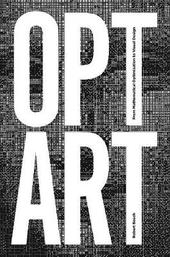
|
Opt Art: From Mathematical Optimization to Visual Design
Hardback
Main Details
| Title |
Opt Art: From Mathematical Optimization to Visual Design
|
| Authors and Contributors |
By (author) Robert Bosch
|
| Physical Properties |
| Format:Hardback | | Pages:200 | | Dimensions(mm): Height 235,Width 155 |
|
| Category/Genre | Art forms |
|---|
| ISBN/Barcode |
9780691164069
|
| Classifications | Dewey:700.411 |
|---|
| Audience | |
|---|
| Illustrations |
22 color + 143 b/w illus. 4 tables.
|
|
Publishing Details |
| Publisher |
Princeton University Press
|
| Imprint |
Princeton University Press
|
| Publication Date |
12 November 2019 |
| Publication Country |
United States
|
Description
A fun and stunningly illustrated introduction to the art of linear optimization Linear optimization is a powerful modeling method for discovering the best solution to a problem among a set of available alternatives. It is one of today's most important branches of mathematics and computer science-and also a surprisingly rich medium for creating breathtaking works of art. Opt Art takes readers on an entertaining tour of linear optimization and its applications, showing along the way how it can be used to design visual art. Robert Bosch provides a lively and accessible introduction to the geometric, algebraic, and algorithmic foundations of optimization. He presents classical applications, such as the legendary Traveling Salesman Problem, and shows how to adapt them to make optimization art-opt art. Each chapter in this marvelously illustrated book begins with a problem or puzzle and demonstrates how the solution can be derived using a host of artistic methods and media, including 3D printing, laser cutting, and computer-controlled machining. Bosch focuses on mathematical modeling throughout-converting a problem into a workable mathematical form, solving it using optimization techniques, and examining the results, which can take the form of mosaics, line drawings, and even sculpture. All you need is some high-school algebra, geometry, and calculus to follow along. Featuring more than a hundred illustrations and photos of Bosch's own art, Opt Art demonstrates how mathematics and computing can be used to create beauty and express emotion through amazing works of art.
Author Biography
Robert Bosch is professor of mathematics at Oberlin College and an award-winning writer and artist. His sculpture Embrace was awarded first prize at the 2010 Mathematical Art Exhibition in San Francisco. Visit dominoartwork.com for more of Bosch's mathematical art. He lives in Oberlin, Ohio. Twitter @baabbaash
Reviews"The writing is inviting, and Bosch gives motivated students and other readers the tools they will need to jump right in and start creating their own mosaics or other images using his ideas."---Evelyn Lamb, Scientific American "Bosch provides a careful, thorough, and accessible discussion of linear programming. . . . An interesting addition to the growing literature on mathematical art."---C. A. Gorini, Choice "Opt Art serves as an inviting introduction to a curious corner where art and mathematics intersect. Bosch projects equal enthusiasm for both. The artwork is not just an ornament meant to attract a broader readership, and the math is not just a tool for producing pictures. For Bosch it's clear they both hold deep intrinsic interest, and he communicates this to the reader."---Brian Hayes, American Scientist "With the dynamic, flexible artistic tool of optimization, equations take the place of oil or gouache. With calculation, ingenuity, and insightful uses of mathematics, Bosch teaches readers how to create art pieces that include collages, labyrinths, and continuous line drawings. Not only can a reader be prepared to create artistic pieces, Bosch's book places an artistic master, the author himself, next to the reader, sharing wisdom and insight to make one's imaginations into artistic realizations."---Tim Chartier, The American Mathematical Monthly "This is a great book, for those interested in mathematics, that captures both linear optimisation and art. . . this will be a bookshelf favourite for a number of readers."---Kenny Green, Mathematics Today
|